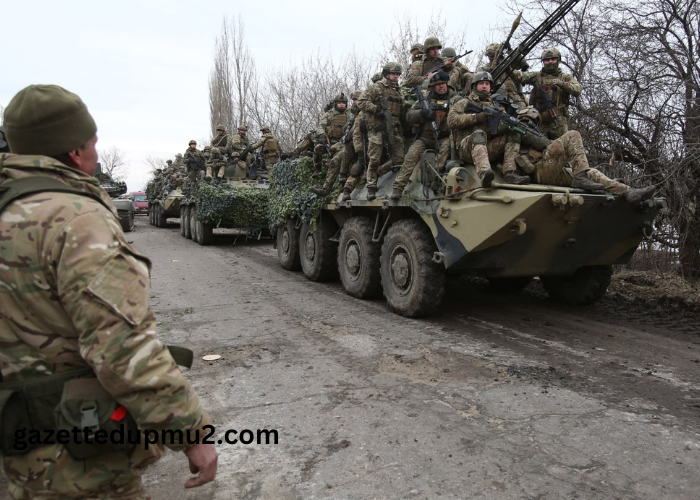In recent years, the conflict in Ukraine has captured global attention, evoking emotions of concern, empathy, and urgency. What began as a series of protests in 2013 has escalated into a full-fledged conflict, leaving a trail of devastation and displacement in its wake. In this article, we delve into the multifaceted dynamics of the war in Ukraine, examining its historical roots, geopolitical dimensions, humanitarian impact, and prospects for resolution.
Historical Context: Tracing the Origins of the Conflict
To understand the war in Ukraine, one must first delve into its historical context. Ukraine’s history is marked by a complex tapestry of influences, including centuries of foreign rule, territorial disputes, and ethnic tensions. The legacy of Soviet rule looms large, leaving behind a legacy of political, economic, and social upheaval. The collapse of the Soviet Union in 1991 gave rise to an independent Ukraine, but it also laid the groundwork for future conflicts, as unresolved issues of identity, language, and allegiance simmered beneath the surface.
The Euromaidan Revolution: A Turning Point
The Euromaidan protests of 2013-2014 served as a catalyst for the current conflict, igniting a wave of popular discontent against the government of then-President Viktor Yanukovych. What began as a peaceful demonstration in Kyiv’s Maidan Nezalezhnosti (Independence Square) soon escalated into a violent confrontation, as security forces cracked down on protesters, leading to numerous casualties and widespread outrage. The events of the Euromaidan revolution ultimately culminated in Yanukovych’s ousting and the installation of a new government, but they also deepened existing divisions within Ukrainian society and heightened tensions with Russia.
Annexation of Crimea: A Violation of International Law
In March 2014, Russia seized Crimea, a strategic peninsula in the Black Sea region, in a move that sent shockwaves across the international community. The annexation of Crimea was met with swift condemnation from Western powers, who denounced it as a violation of Ukraine’s sovereignty and territorial integrity. In response, the United States, the European Union, and other countries imposed sanctions on Russia, leading to a deterioration of relations and a new era of geopolitical tensions reminiscent of the Cold War.
Conflict in Eastern Ukraine: A Protracted Struggle
Meanwhile, in the eastern regions of Donetsk and Luhansk, pro-Russian separatist movements emerged, fueled by grievances over perceived discrimination and neglect by the central government in Kyiv. The conflict quickly escalated into a full-fledged insurgency, as separatist forces, with the backing of Russian military support, clashed with Ukrainian troops in a brutal and protracted struggle for control of the region. The fighting has exacted a heavy toll on the civilian population, resulting in thousands of deaths, widespread displacement, and untold suffering.
Humanitarian Crisis: A Call to Action
The war in Ukraine has triggered a humanitarian crisis of staggering proportions, with millions of people in need of assistance and protection. Displaced from their homes and livelihoods, vulnerable populations face dire shortages of food, water, shelter, and medical care, exacerbating their already precarious circumstances. Humanitarian organizations and aid agencies have mobilized to provide lifesaving assistance to those affected by the conflict, but their efforts are hampered by ongoing violence, bureaucratic obstacles, and funding shortages.
International Response: Diplomacy and Deterrence
Despite numerous attempts to broker a ceasefire and negotiate a peaceful resolution to the conflict, progress has been slow and elusive. The Minsk agreements, signed in 2014 and 2015, aimed to halt hostilities and implement a roadmap for political reconciliation, but they have been repeatedly violated by both sides, underscoring the challenges of achieving lasting peace in a volatile and unpredictable environment. Diplomatic efforts continue, however, with world leaders and organizations working tirelessly to find common ground and forge a path forward.
Prospects for Peace: A Glimmer of Hope
While the road to peace in Ukraine remains long and fraught with obstacles, there are reasons to be cautiously optimistic about the future. Public opinion polls indicate that a majority of Ukrainians support a peaceful resolution to the conflict, and there is growing recognition among key stakeholders of the need to prioritize dialogue and compromise over confrontation and escalation. With continued international engagement, political will, and grassroots efforts to build trust and reconciliation, there is hope that a durable and just peace can eventually be achieved in Ukraine.
Conclusion: A Call to Action
In conclusion, the war in Ukraine represents a tragic and complex conflict with far-reaching implications for the region and the world at large. As the humanitarian crisis deepens and the human cost of the conflict continues to mount, the international community must redouble its efforts to support those affected and work towards a peaceful resolution. Whether through diplomatic negotiations, humanitarian assistance, or grassroots advocacy, we all have a role to play in ending the suffering and building a future of peace and prosperity for the people of Ukraine.





